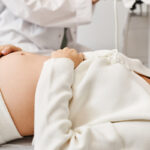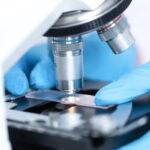Drug-Free IVF: In Vitro Maturation (IVM)

İçindekiler
ToggleWhat Does Drug-Free IVF Mean?
The first question that prospective parents who want to have a baby seek answers for is which method they can use to realize their wishes. In known IVF treatment methods, eggs are collected for processing after they mature. In the drug-free IVF method (IVM), eggs are collected before they mature. And these collected eggs are processed to mature in laboratory conditions. Drugs given to help eggs mature can harm some patients and negatively affect the treatment. This condition called hyperstimulation can sometimes cause serious problems. For this reason, patients can continue their treatment without using drugs and prevent any harm to their bodies with the drug-free IVF method.
During drug-free IVF treatment, hormone therapy is sometimes applied at a very reasonable rate. In some cases, very little hormone may not be applied at all. When the eggs, whose growth is monitored, reach the required size, they are collected with a needle under general anesthesia. These collected eggs are kept in certain fluids under laboratory conditions and their maturation is carried out. In the next stage, the sperm obtained from the prospective father is injected into the eggs with the help of microinjection. The embryos obtained in this way are placed in the uterus as the final stage.
A study was conducted in England in 2012 on drug-free in vitro fertilization. According to this study, 97 people who underwent drug-free in vitro fertilization treatment were compared with 97 people who underwent classical IVF in vitro fertilization treatment. The result of the research is:
- The implantation rate, that is, the rate of the embryo attaching to the uterus, was found to be lower in the drug-free IVF method than in the normal IVF method. (19.4% vs. 12.9%)
- The pregnancy rate in drug-free IVF treatment was found to be lower than in the normal IVF method. (50.5% vs. 19.6%)
- The live birth rate was found to be lower in the drug-free IVF method than in the normal IVF method. (44.3% vs. 16.5%)
- While OHSS occurred in 8% of patients who underwent normal IVF, OHSS did not occur in any of the patients who underwent drug-free IVF.
The most important application area of the drug-free IVF method is mothers with Polycystic Ovary Syndrome who respond excessively to drugs. In such cases, one of the main goals is to perform IVF with IVM without the use of drugs and thus prevent the occurrence of the syndrome called OHSS, or Ovarian Hyperstimulation Syndrome, in mothers with extremely sensitive ovaries.
In addition, it is an alternative method for expectant mothers who have normal ovarian reserve but do not prefer hormone application.
Who Can Get Drug-Free IVF?
Some people who will undergo IVF treatment develop sensitivity to the drugs given in IVF treatment. As a result of this sensitivity to drugs, the unexpected response of the ovaries can cause fluid accumulation in the person’s abdomen and lungs, i.e. ovarian hyperstimulation syndrome-OHSS. Drug-free IVF treatment is especially recommended for people with PCOS, i.e. Polycystic Ovary Syndrome, who are sensitive to these drugs and have a high probability of fluid accumulation in the lungs and abdomen. It can also be applied to people with endometriosis, people who do not respond strongly to drugs, and candidates whose infertility is due to male factors. Hormone therapy is strictly prohibited and is not applied to cancer patients. For this reason, drug-free IVF treatment is a very suitable method for cancer patients.
In an in vitro fertilization method used in patients with low egg reserve, sometimes the collection begins after the eggs mature without medication. In this method, the mother’s self-developing egg within the natural menstrual cycle is used. When the eggs reach the desired size, the mature eggs are collected. Then, they are fertilized with classic in vitro fertilization or microinjection to create an embryo. There is no drug application in this method and it is also called the Natural Cycle Method. However, here the egg develops in the mother’s body and the number is usually very small. It is a method with a low success rate and is only applied to patients with low reserve.
What is Polycystic Ovary Syndrome?
Polycystic Ovary Syndrome is one of the most important ovulation problems seen in women. This problem occurs in approximately 1 in every 5 women.
The two ovaries present in the female body develop a mature egg suitable for fertilization during a menstrual period. This egg develops and matures in a fluid-filled sac called a follicle. In Polycystic Ovary Syndrome, many eggs try to mature at the same time. However, this is not successful. As a result, there is more than one egg, but none of these eggs have the ability to develop and fertilize. With ultrasound, the ovaries can be seen as many sacs containing undeveloped eggs, in a different form as cysts.
What is OHSS?
OHSS, or Ovarian Hyperstimulation Syndrome, occurs in expectant mothers who receive follicle stimulating hormone (FSH) treatment for egg development. If too many eggs develop during treatment, some side effects may be seen in the two weeks following stimulation due to the growth of the ovaries and excessive hormone levels coming from these overly stimulated ovaries. These are:
- Nausea, vomiting and diarrhea,
- Pain in the abdominal area due to enlarged ovaries,
- Shortness of breath due to fluid accumulation in the lungs,
- There is an increase in blood clotting, so clotting may occur in the veins,
- Noticeable differences in body fluid and electrolyte balance,
- Dehydration, that is, the state of the body being deprived of water
In patients with severe OHSS, the person usually needs to be treated in hospital due to continuous monitoring and bed rest. Women with Polycystic Ovary Syndrome in particular are extremely sensitive to the effects of drugs that stimulate the ovaries. They may experience such side effects due to the hormone drugs applied. When IVF treatment is started without ovarian stimulation with the help of drugs, there is no risk of OHSS. Another important issue is that the amount of drugs applied in the IVM, or drug-free IVF treatment stages is considerably less than in the classical IVF method. For this reason, the treatment costs of the patients are visibly reduced.
What are the advantages of drug-free IVF treatment?
- The treatment is easier than the classical in vitro fertilization method.
- The treatment ends in a time period of 8-10 days, that is, a shorter treatment period
- No side effects
- It does not cause any complications in the person.
- Low number of clinic visits (1-2 times)
- Number of injections applied at most 2 or 3 times
- There is no practice such as blood collection
What are the Disadvantages of Drug-Free IVF Treatment?
In drug-free IVF treatment, eggs of the expected quality may not always be obtained. The pregnancy rate is lower than the classical IVF method.
Who is Not Suitable for Drug-Free IVF Treatment?
- Drug-free IVF treatment is not applied to older mothers.
- In expectant mothers who have low ovarian reserves and who cannot or will not be able to develop more than one egg despite drug treatment,
- Prospective parents who have only one high-quality embryo development compared to the many eggs obtained in classical in vitro fertilization treatments,
- People with cancer who are prohibited from using the drugs used in IVF treatment, or those with ovarian hyperstimulation syndrome, that is, excessive egg development, who are in the high-risk patient group,
- Drug-free IVF treatment is not suitable for patients who do not find it appropriate to preserve multiple eggs or embryos due to their personal opinions and religious beliefs.
What is the Success Rate of Drug-Free IVF Treatment?
Although the success rate of drug-free in vitro fertilization (IVM) is not very high, it has a rate of around 30%.
How Long Is the Treatment Duration for Drug-Free IVF?
The duration of drug-free IVF treatment is between 8-10 days at most. During the 8-10 day period, the person only visits the clinic 1-2 times and it is enough to be in the clinic for only half an hour during these processes. In classical IVF treatments, that is, the treatment applied in the drug method, lasts about a month.
How Much Does Drug-Free IVF Treatment Cost?
The prices of drug-free IVF treatments are the same as the cost of classic IVF treatment. However, since no medication is used, it is more affordable in this regard.
Is Drug-Free IVF Treatment Applied in Turkey?
Drug-free IVF treatment is a method that is widely used all over the world. Although it is a method used in Turkey, it is performed by very few IVF centers.
How to Obtain Eggs Without Medication Using This Method?
Since this method does not involve the use of medication, egg cells that occur spontaneously during the mother’s normal menstrual cycle are collected. Eggs are placed in a suitable culture medium. After this stage, the egg cell is fertilized with the sperm obtained from the father. Fertilization is performed using the microinjection (ICSI) method.r. Döllenme uygulaması mikroenjeksiyon (ICSI) yöntemi yardımı ile yapılır.





